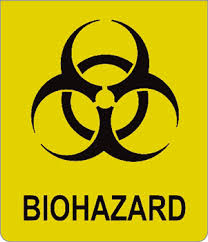


Some 70 experts from more than 25 countries and a number of international organizations recently convened in Zagreb, Croatia, for a workshop on ‘Governance of Dual Use Research in the Life Sciences: Advancing global consensus on research oversight’.
The workshop was held at the headquarters of the Croatian Academy of Sciences and Arts (CASA) and hosted by CASA and the Croatian Society for Biosafety and Biosecurity. The meeting, which took place from 10-13 June 2018, was organized by the US National Academies of Sciences, Engineering and Medicine (US NASEM) and IAP in collaboration with these two host organizations. Funding for the event was largely provided by US NASEM via a grant from the Open Philanthropy Project (OPP).
Opening the event, Sue Meek (Australia), chair of the planning committee, introduced the objectives of the workshop and how participants would work towards those goals over the following 2.5 days.
Setting the scene were two keynote presentations, the first from Alta Charo (USA) who spoke on the concept of governance as a layered system across the research enterprise – from voluntary codes to national legislation and international agreements. She was followed by Piers Millet of the iGEM Foundation, who provided an overview of recent examples of life sciences research with dual use implications, including the recreation of the horse pox genome.
Additional examples of research governance in the life sciences were provided by participants from Australia, Italy, Malaysia and the USA.
Having brought the participants up to date and provided with them detailed examples, the workshop then entered a breakout session phase in an attempt to collate inputs of the assembled experts.
Breakout session 1 asked ‘Where are we now?’ and reviewed the landscape of governance efforts that have been undertaken or are currently in progress.
Breakout session 2 attempted to identify lessons learned, gaps and needs, and opportunities for how the research community can react to these.
Breakout session 3 took a forward looking view, asking ‘Where do we want to go from here and how do we get there?’ It focused on identifying opportunities to promote and sustain the governance of dual use research and concrete actions that could be undertaken in the short-, medium- and longer term.
Each breakout session was followed by a plenary discussion session, which allowed further exchange of information and ideas.
At the close of the workshop, Sue Meek pulled together some of the key results and emerging themes. These will now be integrated into a workshop report that will be prepared by a rapporteur and will be ready for publication in 3-6 months.
Some keynote presentations and other information about the workshop are available HERE.
Shortly after the workshop, US NASEM also hosted a webinar on 'Genome Editing and Security: Governance of non-traditional research communities?' that discussed safety and security measures being undertaken in community laboratories and with the iGEM competition. Videos from this session are now available at http://nas-sites.org/dels/events/ge-security/ (scroll to bottom of page).